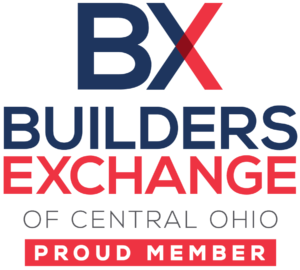Every week I read Time, Business Week, and The Economist, together with about a dozen other periodicals. I’d like to share a number of the main themes “going on out there” and how they might apply to running your business. Remember, what’s going on out there is a reflection of what’s going on “in here.”
1. Education equals wealth. All three magazines tend to piggyback stories from each other. All three have discussed recently how income disparities nationwide and worldwide are impacting society. Fact is, those with the greatest level of education also have the most amount of wealth. The U.S. remains a world leader in education. We have nine out of the world’s top 10 endowed universities and remain the primary source of global innovation. For example, Harvard faculty members have earned more Nobel prizes than either France or Russia.
According to one of the articles, the world’s standard for wealth remains at $1 million in the bank. Another article concluded that it takes approximately $70,000 per year to be happy (i.e., middle class).
How this applies to managing your business: The wealthiest companies will also be the most educated ones, with the most educated owners, managers, and employees. They will place a high value on constant training. Successful companies will give employees an opportunity to learn more so they can earn more.
2. Tiger moms, tiger bosses, and the tiger self. Battle Hymn of the Tiger Mother by Amy Chua, a book written by a controlling Asian-American parent, describes the strictness with which she raised her two daughters. It caused a lot of discussion online, in the media, and among my wife and her friends. Of course, the liberal reaction was that the parent was too harsh. By her own admission, this was sometimes true. However, look at the results. She has two highly talented, healthy, and well-behaved young adults who claim to have no regret with their mother’s tough parenting style. On the other hand, we have an entire generation of parents more interested in being their kid’s best friend than a parent. Many of these kids get to do whatever they want to do, including watching hours of TV, texting friends, or playing video games. These children are disconnected and will not be prepared to compete with the tiger children. Their only hope will be to be more innovative than their counterparts. Unfortunately, I don’t see how hours of TV or video games will help them to be more innovative.
Dan Kennedy reminds us that if we want to be rich, we shouldn’t do what the huddled masses do with their time – which includes watching TV, engaging in gossip, spending hours on social media, fantasy football, and anything to do with Kim Kardashian or Charlie Sheen. I believe that there will be a demarcation not just between the intelligent and the unintelligent, but also between the watchers and the doers.
How this applies to managing your business: Are you a tiger boss? Are you overly demanding of your employees? Do they appreciate or resent your strict ways? Do you have a tiger self? Are you tough on yourself? Are you unnecessarily tough on you? In my opinion, the workplace, like the home, requires a balancing act. I expect nothing but the best from myself and the people around me at work and home. Anything less than excellence is simply not acceptable. I understand the importance of discipline, planning, and process. I also understand that my employees need permission to think for themselves and not to be so afraid of punishment for making mistakes that they fail to push themselves to higher levels.
3. A continuing loss of faith in institutions. There’s a breakdown in confidence with our financial, educational, political, and business institutions. Politics and economics are transitory. Yesterday’s regime is not current enough to be trusted and today’s is not experienced enough to be trusted. As we lose faith in institutions, we’re gaining faith in communities. We trust those who are closest to us. Given the advent of social media, somebody can be very “close,” yet 6,000 miles away. On the other hand, you might connect with a political activist two blocks away from you that you’ve never met before.
How this applies to running your business: Business is an institution. Statistics have shown and common sense reveals that we’re less enamored with our institutions today than ever, whether it’s Congress, the local school board, GM, or your company. There’s less loyalty to business entities among consumers and employees than ever. Employees today trust in and are loyal to the communities that involve their work and personal activities. Today’s leader realizes that they have to foster those communities and motivate them toward profitable ends. You can entertain and talk with people all day long, but as the IBM commercial says, “How do you make money at this?” The answer is to build this community outside of your four walls with your clients, customers, and prospects. A recent book I read, Crush It, encourages us to talk about what we’re passionate about. Do your employees have permission to do this? This might be something as simple as an account manager talking about the passion she has for doing a great job for her clients every day.
4. Hard times for democracy. There’s been a decline in democratic governments. Certainly, imbalances in wealth could be one cause for this challenge. The age-old challenge of trying to get government to spread the wealth through capitalist and democratic means is falling prey to fear and greed. Even here at home, we’re losing faith in our democratic institutions, even as we continue to realize that they’re the least of all evils.
How this applies to your business: First, the workplace is not a democracy, even if it’s unionized; it’s a business. The challenge I see is that business owners in tough times who operate more out of fear than greed, can move toward an authoritative management style. This will produce short-term results at best and resentment and eventual overthrow at worst. Ask how you can be more “inclusive” of the thoughts and feelings of your workforce.
5. The Consumer Electronics Show. Listening to and reading about what went on in Las Vegas assures me that people are becoming increasingly detached from their natural environment. Whether it’s Apple TV, WII games, or new tools for texting, it appears that the only way we’ll be connected in the future is through digital means. I saw a news video recently in which a woman, while texting to a friend at a mall, tripped over a knee-high wall and fell in to a water fountain in the middle of the mall. One of the employees released the video thinking it was hilarious, and it became a YouTube sensation. Of course, the woman expressed her outrage at this insensitive act and her lawyer had the guy fired! Amazing.
What this means for your business: First, it’s hard to fight today’s reality. Think Kung Fu. Go with the flow! We have to be willing to communicate through these tools as owners and employees. Sticking our head in the sand or playing dinosaur means going out of business. However, as John Naisbett warned more than 25 years ago, the more we go “high-tech,” the more we need “high-touch.” Today, the company that can go high touch will win not just people’s minds, but their hearts and wallets as well. Going high touch in a high-tech world is the single most powerful way to show you care.
6. Us versus Them. Where would the good ol’ plot be without “goodness triumphs over evil?” More than half of the content in these leading news magazines focuses on some type of conflict: Democrats vs. Republicans, North Sudan separating from South Sudan, Arabs vs. Jews, Libyan vs. Libyan, China vs. the world — and all of the violence, destruction, pain, and war that these conflicts create.
What this means for your business: No matter how hard you try to be a good boss, at some point you’ll need to deal with conflicts — employers vs. employees, like cats vs. dogs. As leaders, we need to acknowledge this fact, stand it on its head, and not let workers portray themselves as our victims. If you want to play us vs. them, then do it with the competition.
7. Increasing financial and environmental debt. It doesn’t seem that this trend is going to stop or go away any time soon. Grim realities such as the mortgage scandal, the oil spill, and global warming aren’t going away. In fact, there’s no reason for things not to get worse. We’ve been mortgaging our future for our present and will leave an awful legacy for our children and grandchildren.
What this means for your business: First, we have to teach employees financial literacy. HR That Works members can start by watching the Accounting Game Webinar. Then watch Coach George’s webinar on what you can do about the impact of financial stress on your workforce. You don’t have to become LEED-certified, but you can certainly attempt to recycle paper and reduce waste. Encourage your employees to come up with suggestions about how you can make a greener company. It’s a “cool” thing for them to do.
8. Sometimes the greatest risk lives next door. If the Tucson tragedy taught us anything, it’s that mayhem can show up anyplace at any time.
How this applies to your business: Sometimes we’re so busy looking at the risks we face from the “outside” we forget that the greatest risks that lie closest to home. For example, most auto accidents occur within a one-mile radius of our home or business. The greatest risks we face in our business generally come from the inside as well: The sales manager who did such a bad job that sales were cut in half; the marketing executive that endorsed a risky campaign damaging our brand for years; the driver addicted to crystal-meth who drove head-on into that family. In the end, the greatest risk to you or your business is … you and your business!
9. Last, but not least, there’s been a change in our Zodiac signs! Millions of new-agers have been thrown into psychic turmoil. Think of all the wasted horoscopes. The horror of it all.
What can you do about this at work? Absolutely nothing but to sympathize with those folks who thought that it meant anything in the first place.
That’s my report of today’s news and how it affects your business.





